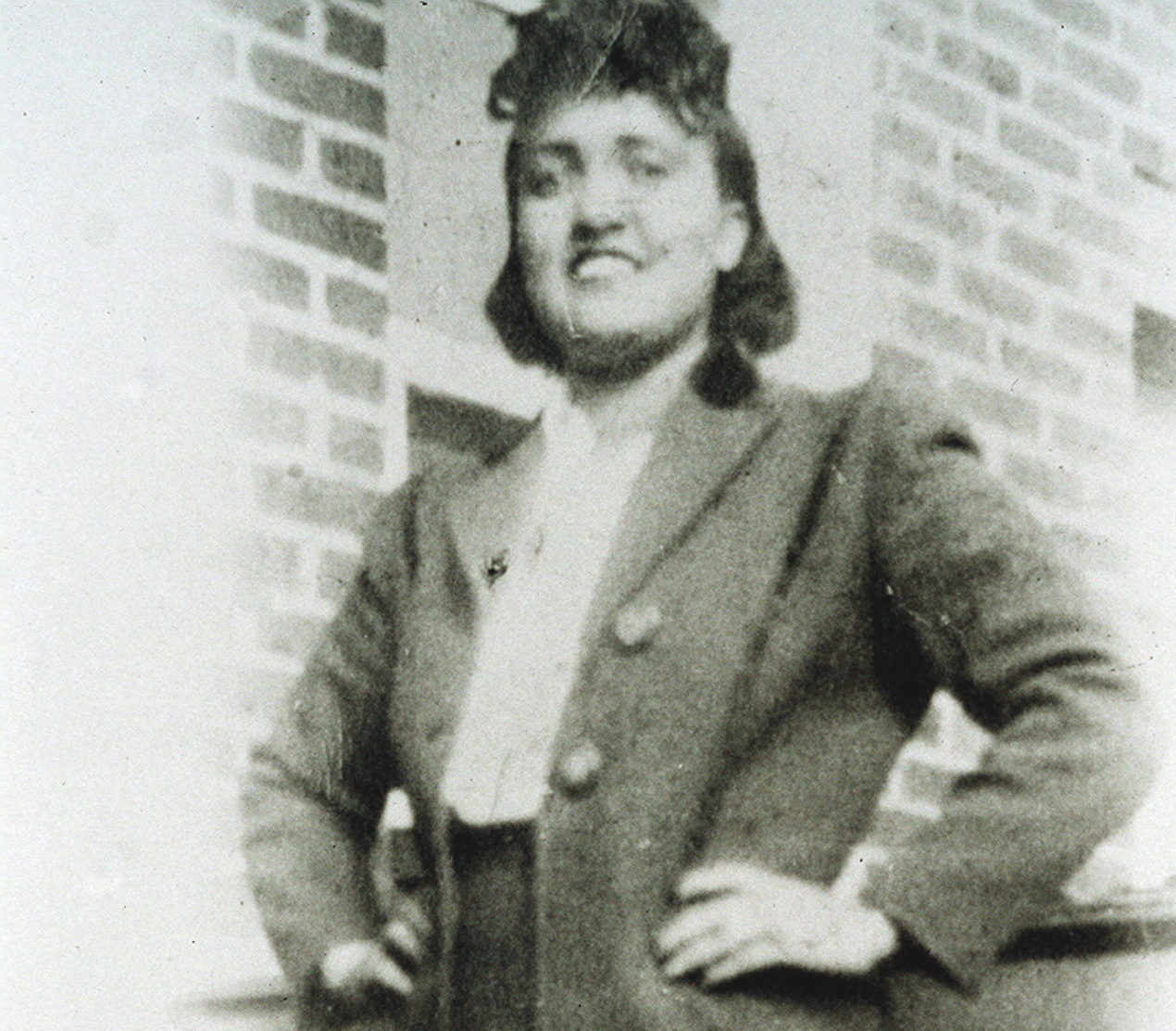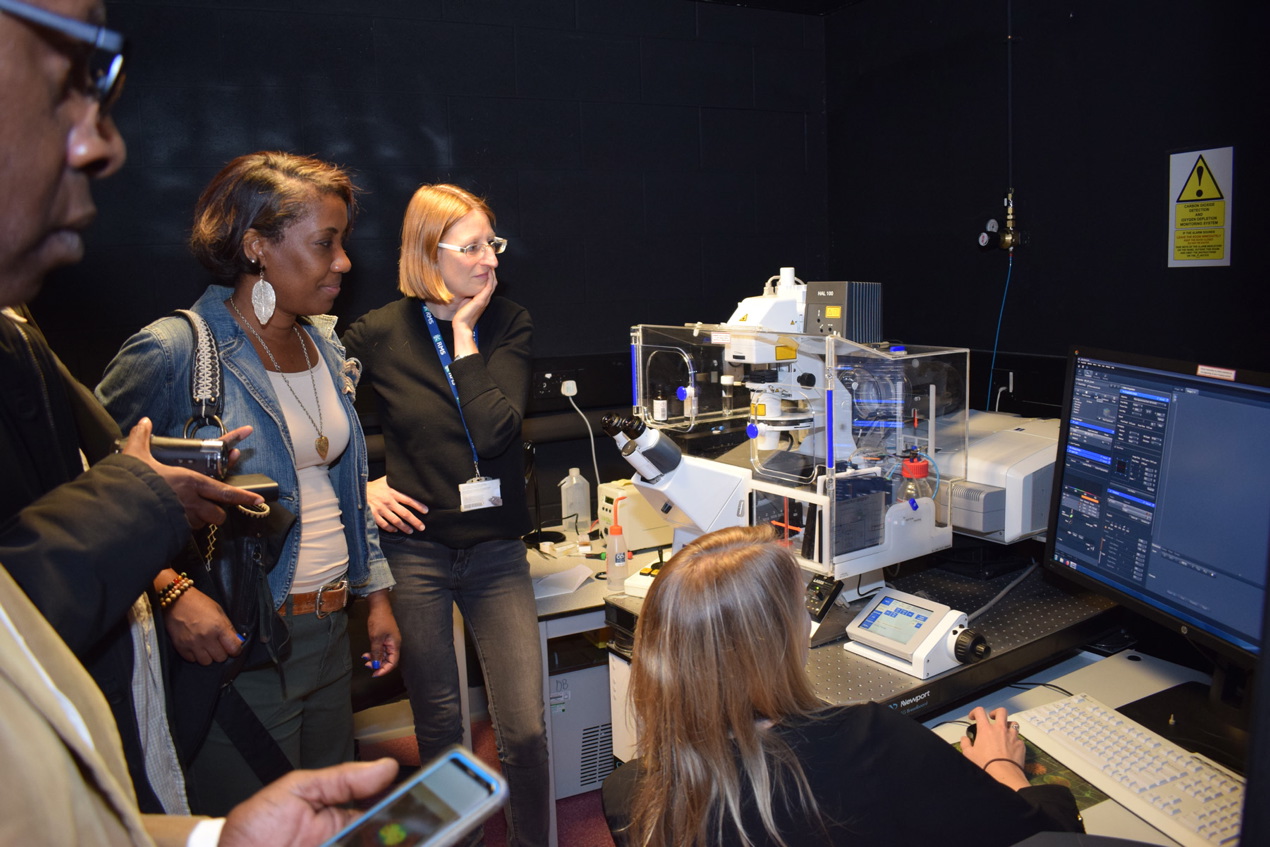Medical debts
The remarkable story of Henrietta Lacks, whose cells were taken unknowingly from her, was brought to Liverpool recently by her family
Not much connects the fictional Sinead Osbourne from Coronation Street and a young Baltimore woman named Henrietta Lacks, apart from the manner of their deaths – a particularly aggressive form of cervical cancer. Henrietta’s death would turn out to be highly significant, however.
“The medical establishment withheld information for decades until people started asking questions.”
While storylines such as Osbourne’s are said to contribute to the uptake in cervical smear tests, it remains the case that testing coverage in England is falling. “In areas such as Liverpool, for example, the take-up of cervical smear tests is lower than the national average,” says Professor Sarah Coupland, director of the North West Cancer Research Centre at Liverpool University. “One in three women of screenable age are failing to attend for tests that could save their life.”
Self-sample kits for women to use at home in the form of a urine or swab test are now being piloted and could radically improve early detection. “We work to highlight the importance of cervical screening and getting vaccinated against the human papillomavirus (HPV), which can lead to cervical cancer, and which boys can now also take,” adds Coupland.
A smear test did not save Henrietta because they did not exist when she died aged 31 in 1951, leaving behind five young children and a grieving husband. Yet, because of a remarkable quirk of fate, she has become more powerful and eternal than any fictional character could ever be.
Unbeknown to Henrietta and her family, her cancerous cells were harvested before she died by doctors at the Johns Hopkins Hospital in Baltimore, one of the few US hospitals at the time that would treat black Americans.
Henrietta the person was soon forgotten by medical science. But her cells – the building blocks of her life – thrived. It was the first time human cells had been successfully cultured outside the human body. Not only did they survive – they proliferated at a record rate.
Named HeLa after their unwitting donor’s name, the cells continued to be grown and sent across the world to labs and hospitals where cell biologists and researchers used them to help detect early cancers and find cures, treatments and medicines for all kinds of diseases. Within a year of Henrietta’s death scientists were producing trillions of HeLa cells every week in a purpose-built production facility.
Two Nobel prizes have been awarded and many stellar careers progressed on the back of the HeLa cell line. Biotech firms have made millions of dollars. Most people today owe their health treatments to medical advances that emanate from Henrietta’s cells, a woman born on a former slave plantation in Virginia, who had a tough life as a tobacco farmer, died in obscurity and was never asked, let alone paid, for her remarkable contribution.
Doctors and scientists, caught up in the highly competitive race to cure cancer, routinely took what they needed for their research at the time. Consent, informed or otherwise, was not legally required and few people asked questions.
HeLa cells were first put to use to help develop the vaccine for polio. They went up into space to test the effect of zero gravity on the human body; they tested the effects of radiation; they have been used to develop cosmetics products, and in more recent decades they have contributed to advances in IVF treatment and HIV medicine, and latterly the HPV vaccine.
Back in Baltimore, Henrietta’s family knew nothing about it. “Henrietta’s husband and children tried to find out more but were met with silence,” says Jeri Whye Lacks, one of her granddaughters who now promotes science education through her grandmother’s story.

“It wasn’t until the medics returned and drew blood from her family two decades after she had died that they found out about HeLa. They thought they were being screened for the cancer. But it was all going towards their research, so they were unwittingly being used in the same way that Henrietta was. The medical establishment withheld information for decades until too many people started asking questions and the family started to push for explanations.”
In Liverpool, Jeri and her brother David Lacks Jnr took part in an arts and science collaboration between the North West Cancer Research Centre and the Tate gallery about their grandmother.
“We want to broaden the understanding of science and show that it’s more than Bunsen burners and monocular microscopes,” says Professor Coupland. “We try to engage with lower income parts of Merseyside because fewer people in these areas apply for university, thinking – falsely – that it is out of their reach. But it’s raising awareness of the human stories behind science too, and in pondering what to do with all these strands, we thought about cell lines and looked at the first ever cell line created, which was HeLa.”
The project covered the story of her life, an art competition about Henrietta, judged by David and Jeri, workshops to make art inspired by the cells, a theatre project based on her life and the chance to look at the magnified cells through a microscope. “It was the legitimacy of the Tate Liverpool project that convinced us,” says David. “It recognises in a beautiful and creative way that our grandmother’s ongoing contribution is her multiplying cells.
“It was a chance conversation 20 years later with a doctor that led to us finding out that they had been able to isolate Henrietta’s cells and the incredible discoveries that they led to,” he adds. “We now know so much about the HeLa cell line. Other cell lines have been developed since, but HeLa’s is the first and strongest.”
“It’s also about power,” says Emma Squibb, community relationships co-ordinator at the North West Cancer Research Centre. “We wanted to demonstrate patient power and to show how we all owe Henrietta a debt of thanks. All types of cancers and other diseases – even a headache – have treatments that have been researched from her original cells.
“Liverpool has such a high incidence of cancer and doing it as an art project shows there’s a person behind every cancer cell line. It’s a way of getting the message across without lecturing people on how to live, which they don’t want or need.”
Clinical trials are necessary to ensure drugs and treatments are safe but legislation has mostly followed from scandals about unethical testing. Once cells, tissue, diseased organs and body parts were removed from a human body, living or dead, doctors and scientists systematically used them for research. If the human guinea pigs were poor, uneducated, working class or black this was made easier by the science establishment’s power and sense of entitlement.
Experimentation and unanaesthetised surgery on black people happened during the slavery era in the US. Gynaecologist James Marion Sims operated on enslaved black women to treat birth injuries with untried techniques. Even in death dignity was a rare commodity for black people, because black bodies were used far more often for dissection and teaching purposes than white ones.
In the 20th century unethical clinical trials such as the infamous Tuskegee experiments had left African Americans rightly wary of the medical establishment. This was a study that lasted for 40 years, where men were deliberately left untreated for syphilis so the progress of the disease up to death could be studied by researchers.
The ensuing scandal led to the 1974 National Research Act in the US to prevent people being exploited for medical research in this way. But before the birth control pill was approved in the United States, women in Puerto Rico were used as guinea pigs for the oral contraceptive*. They had not given consent and researchers did not explain the risks, even when three women died of blood clots.
Down the decades Henrietta’s story became more widely known beyond the world of science, first with The Way Of All Flesh, a 1997 BBC documentary by Adam Curtis, then with The Immortal Life Of Henrietta Lacks, a bestselling book by the science journalist Rebecca Skloot published in 2010, and a 2017 film of the same name starring Oprah Winfrey as Henrietta’s daughter Deborah. Henrietta’s oldest son Lawrence and his wife Bobette have also published a family memoir.
While researching her book, Skloots discovered that Henrietta’s daughter Elsie had also been subjected to terrifying medical experiments at the institution where she had been sent because she was deaf and dumb, and where she died aged 15.
Gradually the Lacks family has been able to take control of Henrietta’s legacy by working with scientists, educationalists and the medical profession to ensure ethical use of tissue and cells. In 2013 they won the right to sit on the panel that controls access to the HeLa cell line after scientists at the European Molecular Biology Laboratory sequenced Henrietta’s genome and shared the data online without permission and with all the implications for her descendants that ensued from the lack of privacy.
That the Lacks family has struggled with the repercussions and the complex strands of Henrietta’s (and Elsie’s) life and early death is no surprise. “The majority of the family are moving in a positive direction and using what happened as a platform to inform people about clinical trials,” says Lacks Whye.
“There are so many strands to Henrietta’s story and short life. The family are proud that her cells have led to invaluable medical and scientific advances, but we also want to protect and celebrate her legacy. There are all kinds of avenues through which this can be done, such as the wonderful book and the film, and projects such as the Tate’s that involve so many people. There’s not a person out there who isn’t affected in some way by Henrietta’s legacy.
“Most of all, though, it’s about health equity – making sure that healthcare is for everyone and not just the wealthy. We are bringing awareness to our grandmother’s story and there’s a strong educational component about healthcare, about being your own health advocate. In a way, this is what Henrietta was, because she knew something was not right when she found a lump in her vagina which turned out to be a tumour.”
The repercussions of Henrietta’s story continue to proliferate like her cells. In the UK, medical malpractice cases such as the Alder Hey organs scandal, where organs and foetuses were collected without consent, have led to the Human Tissue Act 2004. This created a new offence of DNA theft and tightened up the legislation for ethical approval for any research projects that aim to use stored tissue. With consent, tissue can now be put aside and used for research.
“Our dad shut down and never spoke about losing his mother,” says Lacks Whye. “But when the book came out he slowly started to tell people about her and how he felt – not just about losing his mother but the trauma of the unfolding story of her cells. It has been a healing process for him and for the whole family.”
Henrietta’s story in a wider sense encapsulates America’s turbulent history of racial politics and its entrenched fault lines caused by slavery. She is buried in an unmarked grave among the trees in the tiny settlement where she was born on the floor of a sharecropper’s shack in 1920. In 2020, a hundred years after her birth, two new buildings in her hometown and adopted city are to be named after her.
A new cancer research and treatment centre in Halifax County, Virginia, where Henrietta married David “Day” Lacks, will be named after her, and the Henrietta Lacks Life Centre, a new biomedical research building, will become part of Johns Hopkins Hospital in Baltimore, where she moved as a young mother of 22, her whole life ahead of her.
